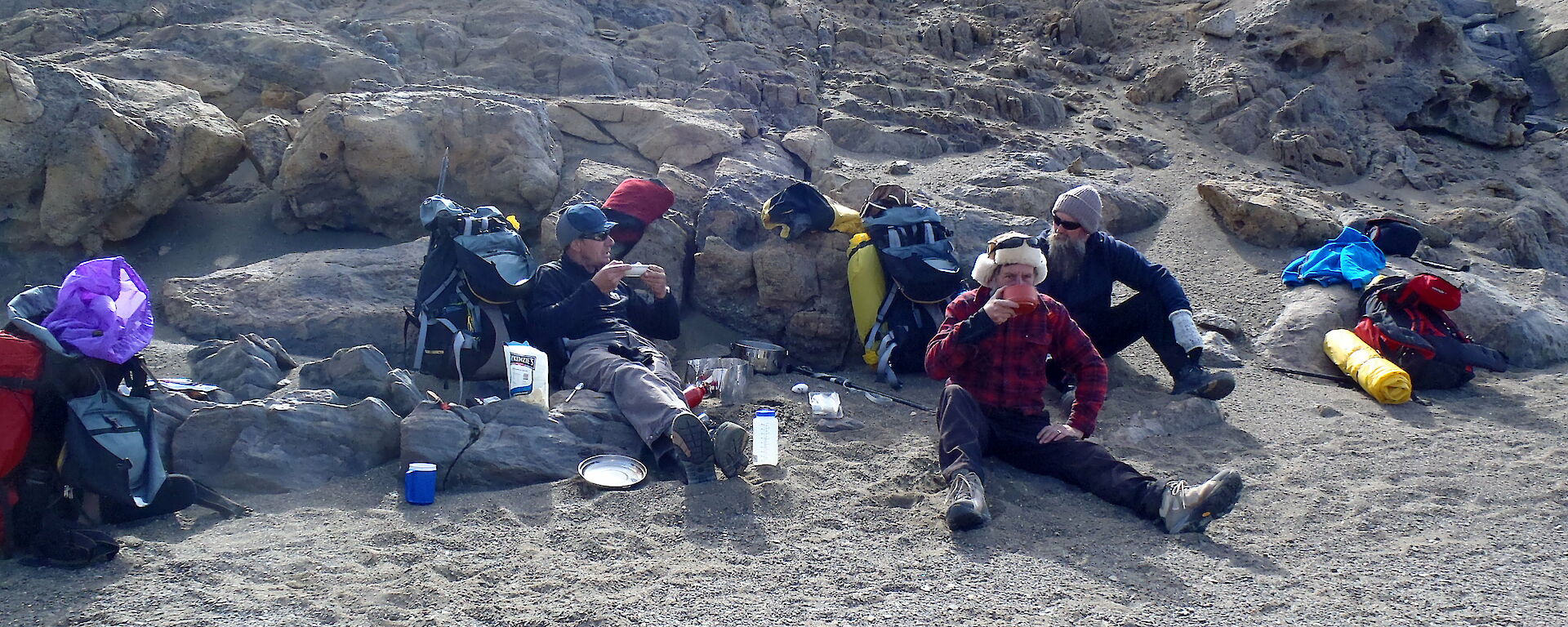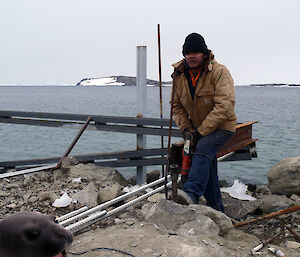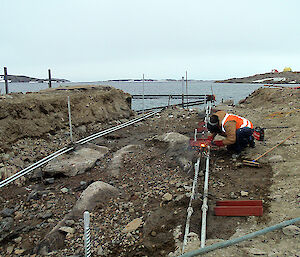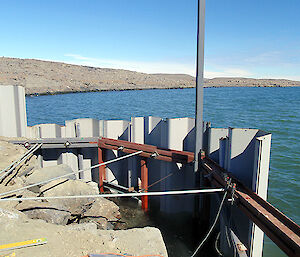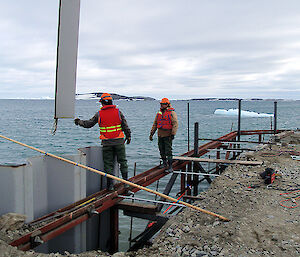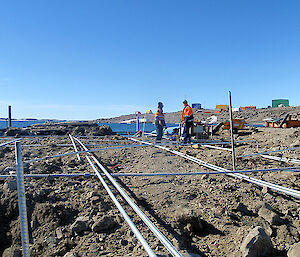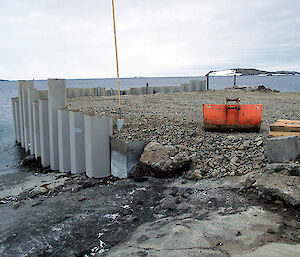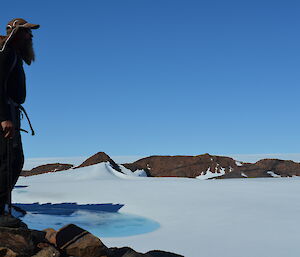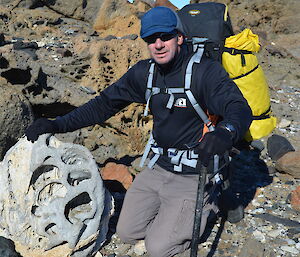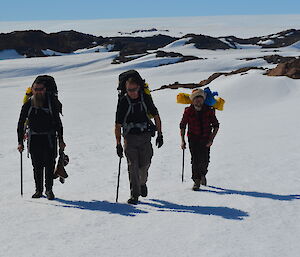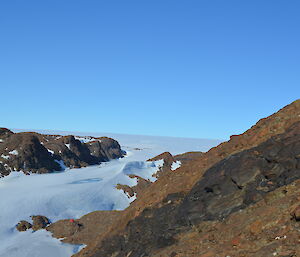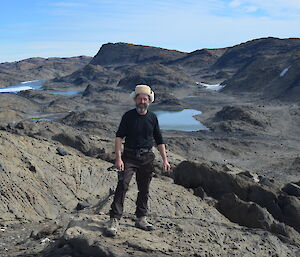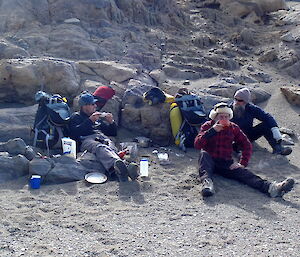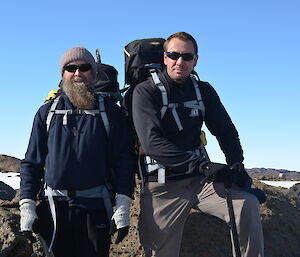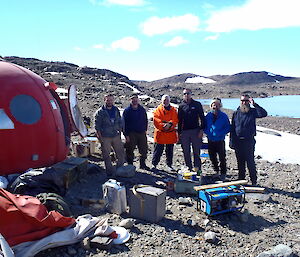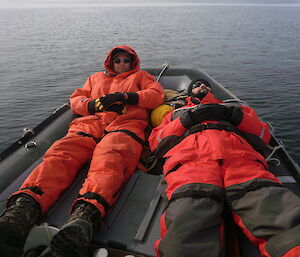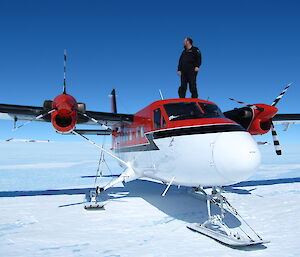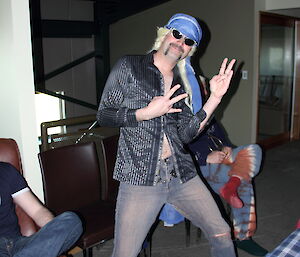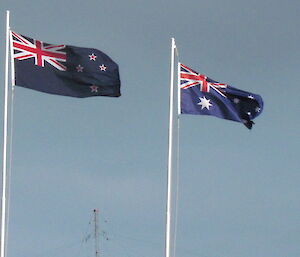One of the highlights of the season for expeditioners in the Trades group was the opportunity to get away from the “big smoke” of Davis Station and get out exploring the Vestfold Hills.
John Hodgson was instrumental in enlisting one group with Matt, Rod and Francis, while Bradley, Geoff, John Harris, Dave and Tim formed the other.
The plan was for the two parties to walk in opposite directions stopping overnight at Brookes, Platcha, Trajer Ridge and Marine Plain huts. Although the total distance walked was a modest seventy kilometres or so, the terrain made it fairly strenuous going. We were relieved to find the huts at the end of the day’s walk and indulge in a frenzy of carbo-loading. Rod was quietly amazed at how much tea the Poms could drink.
About half-way round the two groups met up and swapped tips on routes best avoided. Geoff advised which lake he had filled his water bottle from, only to discover later it was brine. John’s group had overcome this by brewing tea when a natural break arose en route.
We also met up with a group of Russian geologists staying at Crooked Lake who kindly offered us vodka at 9.30 in the morning. We tactfully declined and had tea with them instead.
For all the team members, walking in the boulder-strewn valleys of the Vestfolds to the edge of the Antarctic Plateau was an awesome experience, in every sense. It is impossible to convey the sheer enormity and wilderness of the ancient landscape, its sculpted rock formations and the sense of desolation that is so vast as to be almost intimidating.
The weather was exceptional throughout the trip and, with 24 hours of daylight, made for excellent walking and photography.
After five days we were pleased to see the radio masts of Davis and were greeted by a platoon of Adelies as we approached.
Hot showers and a hot meal in the mess were accompanied by a couple of well deserved beers and followed by a very early night.

